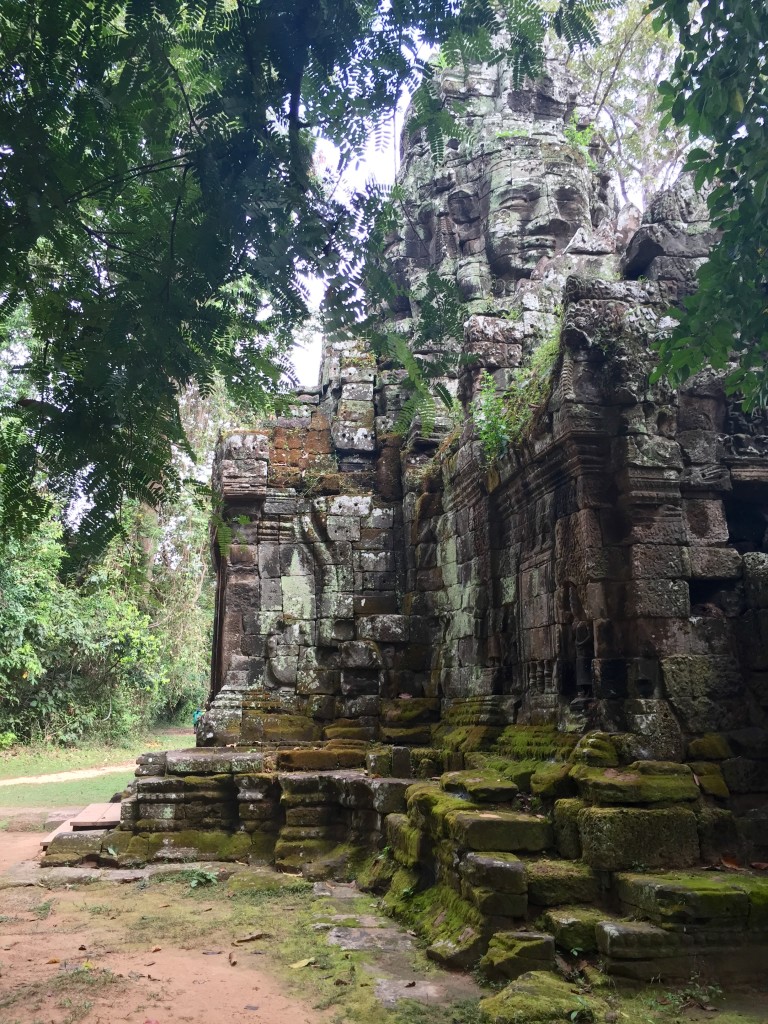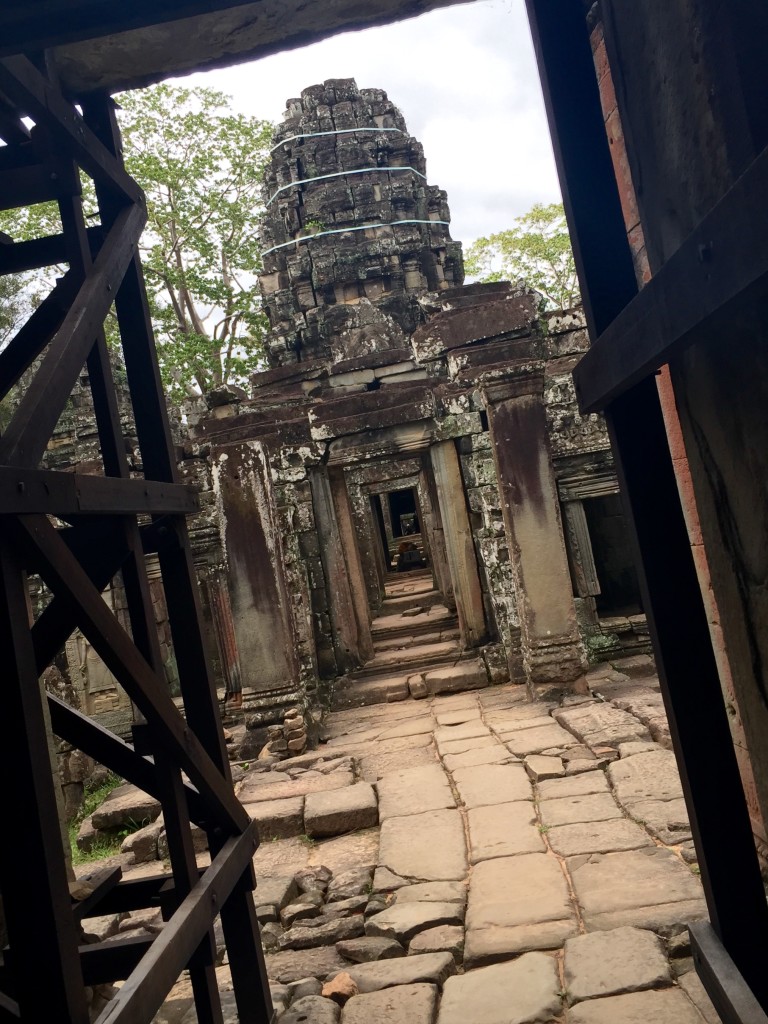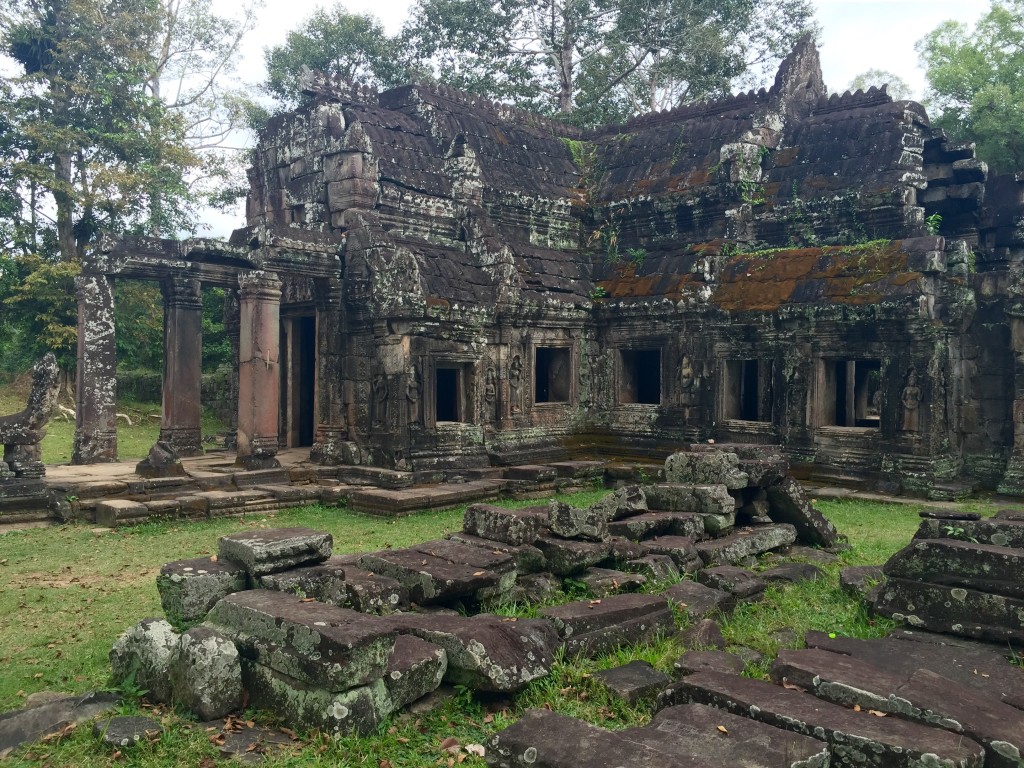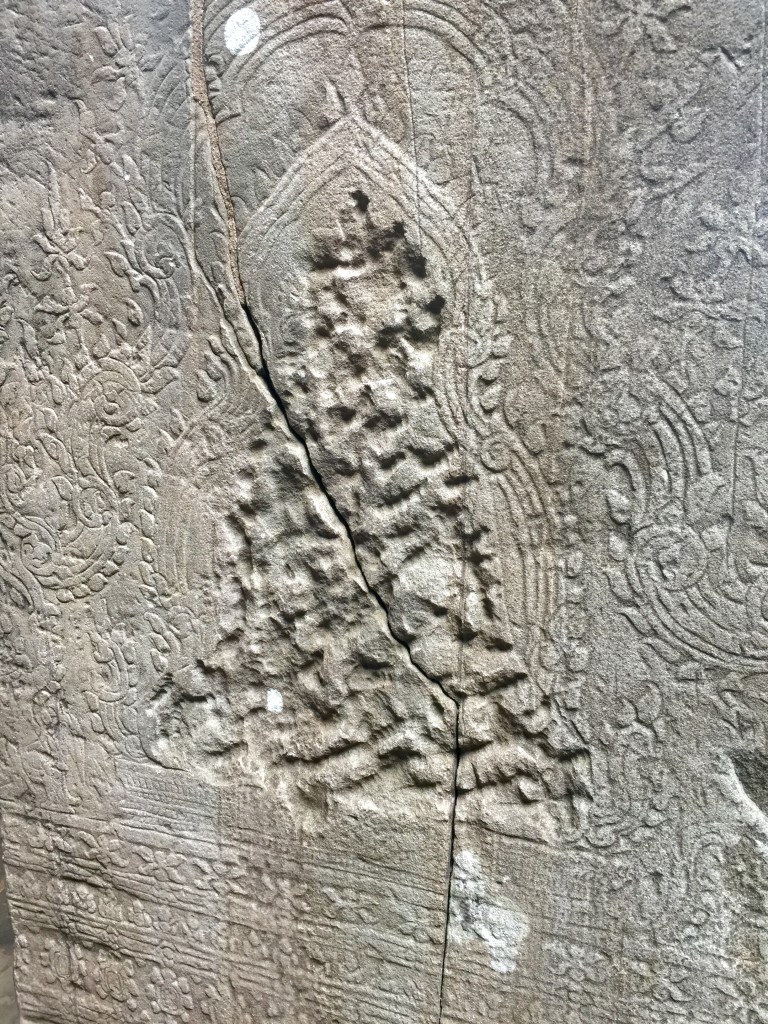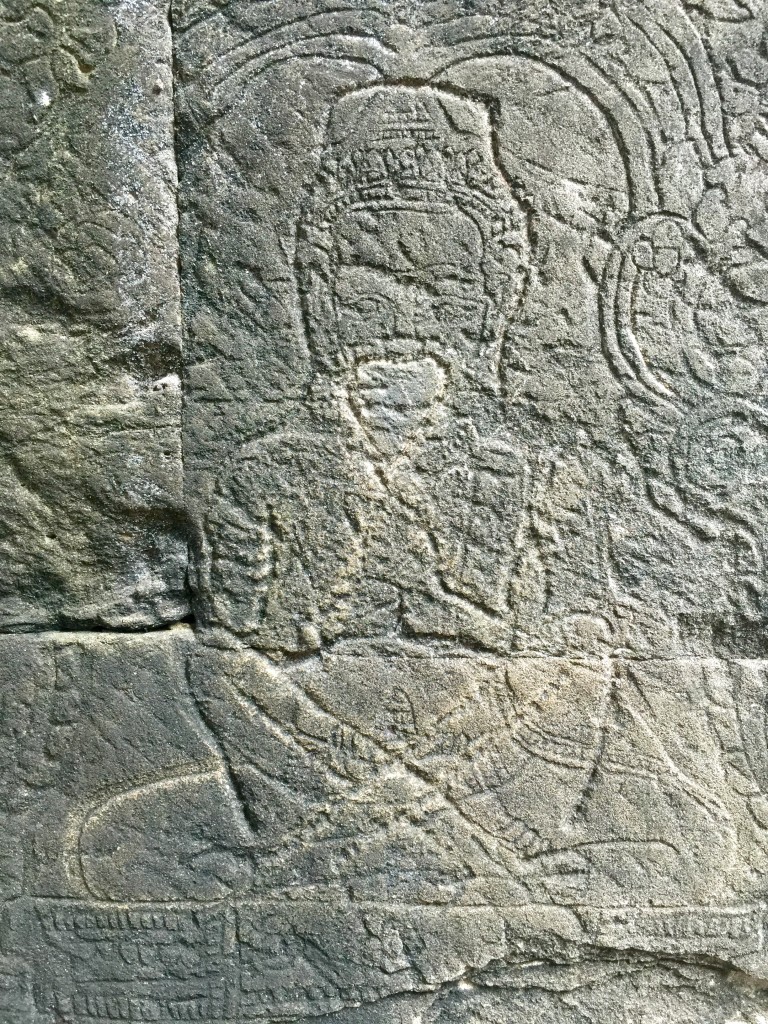Considering that Angkor Wat was built for the Hindu god Vishnu but has since been a place of Buddhist pilgrimage, I was often confused as to whether I was looking at Buddhist or Hindu structures, even when there were well-preserved sculptures and reliefs with layers of detail and symbolism.
Here’s an architectural hint – You can tell the religious background of a 4-faced statue by what’s on their head: the Buddhist Bodhisattva Avalokitesvara (aka Lokesvara) will have a lotus while the Hindu Brahma will have a top knot. If you want to stay in the shade at the angle from which the photograph is taken, can you tell?
Bantay Kdei is a 12th century Buddhist temple within the small circuit of Angkor temples near Siem Reap. The side shown is facing South on the temple’s outer gate, but supposedly the smile of the East-facing Buddha is always happiest because East represents delight, West is mercy, South is sympathy, and North is equanimity. There are also little Buddhas lining the outer wall.
The layout of Bantay Kdei consists of three concentric walls arranged in linear fashion. The outer wall is made of rusty-red laterite and the rest of the structures are of sandstone which decays in the persistent presence of moisture. The temple has undergone significant restoration because the jungle naturally takes over the structures. The restoration efforts use blocks from the same quarry as the original stone.
The central area is a temple with galleries, dancing halls for the king, and food storage structures. Pillars are fastened to the structures with mortise and tenon joints.
To walk through Khmer temples is to feel overwhelmed with fascinating artistic detail and structural immensity. One’s eye is perpetually met with the sight of enigmatic piles of stone blocks lying unassembled and yet unlinked to their source location and purpose. One’s ears are full of the omnipresent piercing sound of Cambodian cicadas that seem to follow the listener through the exploration of ruins.
While we’re talking about sensory experiences – watch where you step, particularly at this temple. The red ants and fire ants are everywhere and climb fast.
In later centuries, Hindus arrived and defaced the Buddha reliefs at Bantay Kdei. Recently, Japanese archeologists also found a collection of Buddha statues that were taken from the temple and buried nearby when the temple temporarily became a Hindu place of worship.
In some cases, the Hindu newcomers amusingly attempted to “Hinduize” Buddha carvings by scratching in a goatee, cosmetically morphing the lotus into a bun, and redrawing the outline of the cross-legged position to legs folded upwards like a Hindu Brahmin. You can still see the original outline above. I imagine a museum on the history of graffiti commencing with ancient Hindu devotees and eventually making its way to Banksy.
Today, it is estimated that at least 90% of the Cambodian population practices Theravada Buddhism which draws from Hinduism as well as Buddhism. Angkor Wat is still a place of pilgrimage for both, and I didn’t sense any signs of religious tension.

